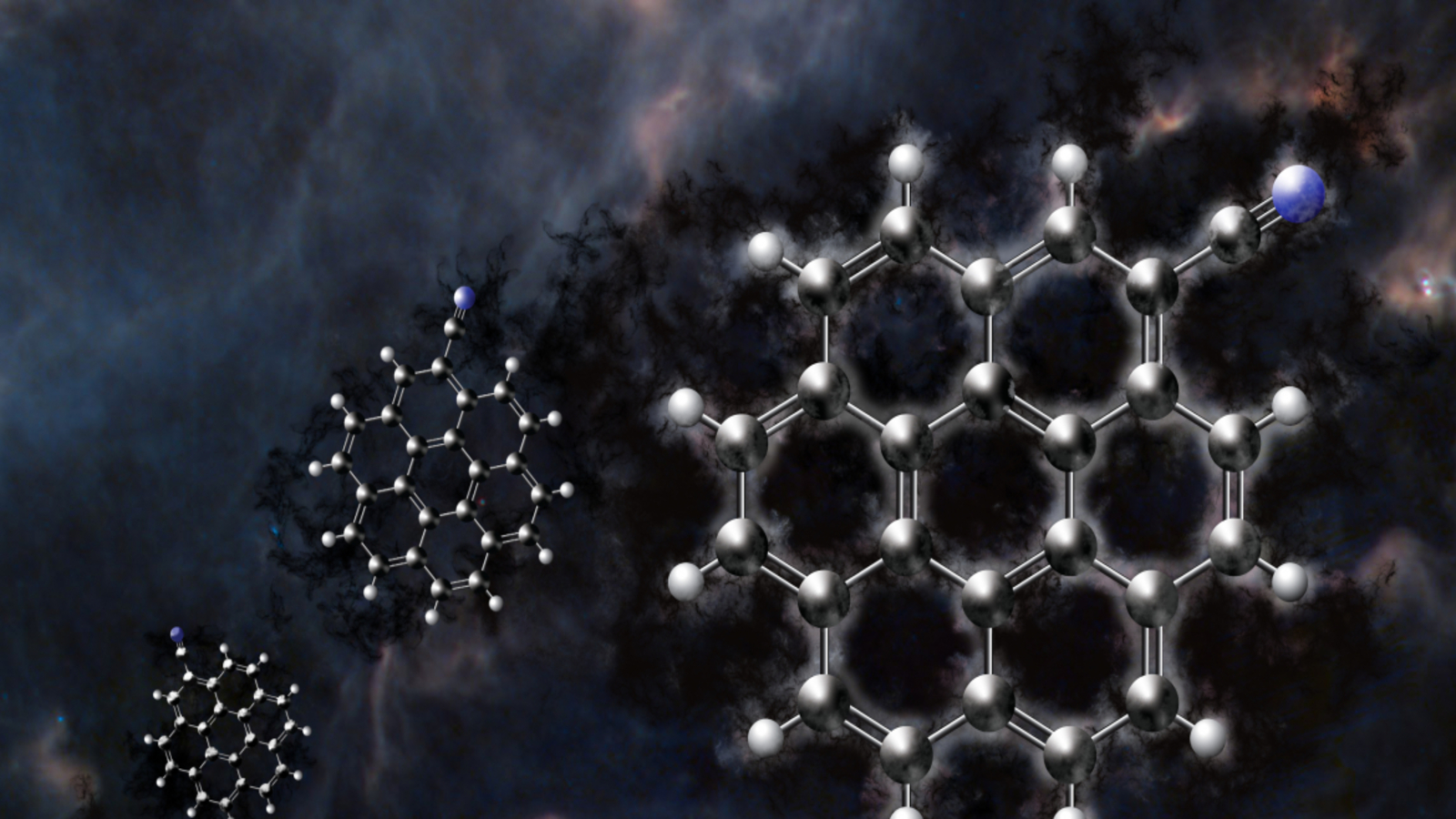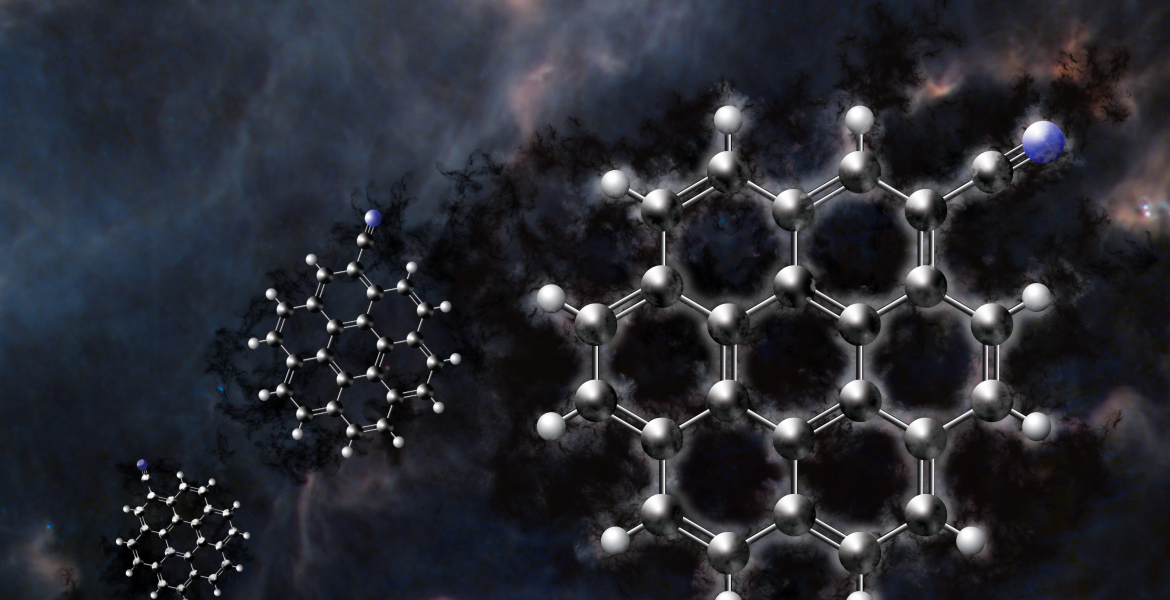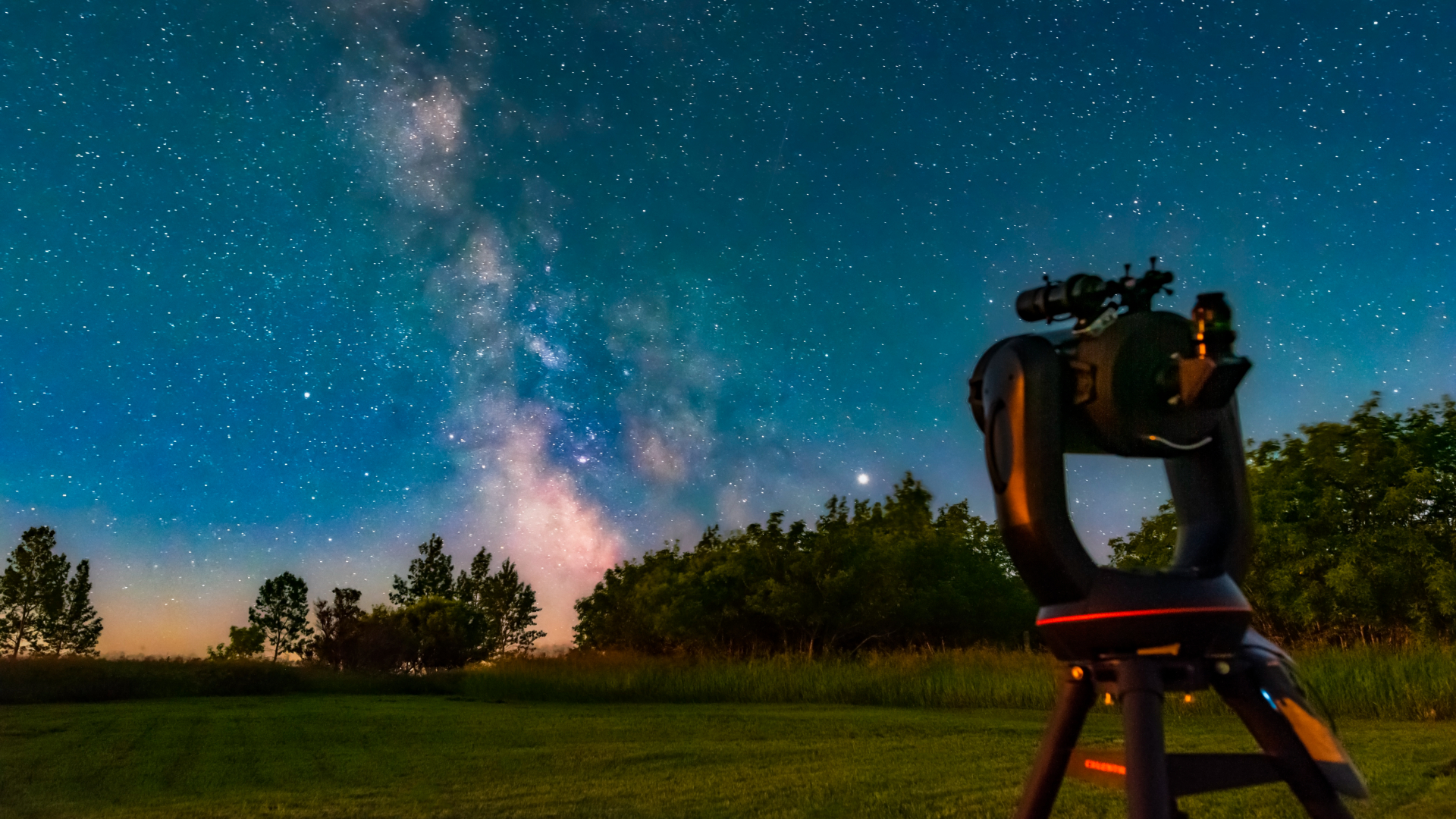Astronomers discover 'raw materials for life' can form in planetary systems even before stars
"Each new detection brings us closer to understanding the origins of complex organic chemistry in the universe — and perhaps, the origins of the building blocks of life themselves."

Scientists are claiming a "cosmic chemistry breakthrough" following the discovery of a large "aromatic" molecule in deep space. The discovery suggests that these molecules could help seed planetary systems with carbon, supporting the development of molecules needed for life.
The molecule, called cyanocoronene, belongs to a class of carbon-based organic compounds called polycyclic aromatic hydrocarbons (PAHs), which are made up of multiple fused aromatic rings — structures in which electrons are shared across double-bonded carbon atoms, giving them unique chemical stability.
"PAHs are thought to lock away a significant fraction of the universe's carbon and play a key role in the chemistry that leads to the formation of stars and planets," National Radio Astronomy Observatory representatives wrote in a statement. "Until now, only smaller PAHs had been detected in space, with this new discovery significantly pushing the known size limit."
The scientists determined that cyanocoronene can form efficiently in the cold conditions of space through reactions between coronene and highly reactive cyanide radicals at low temperatures.
"This means the chemistry that builds complex organics can happen even before stars are born," the researchers wrote, highlighting that such prebiotic molecules may be common ingredients in the early stages of star and planet formation.

The cyanocoronene was identified by the Green Bank Telescope (GBT), part of the National Radio Astronomy Observatory, in the Taurus Molecular Cloud (TMC-1). This star-forming region, located in the constellations Taurus and Auriga, is known for its rich and complex chemistry.
The GBT — located in Green Bank, West Virginia — is the world's largest fully steerable radio telescope. Standing 485 feet (148 meters) tall with a dish 100 meters (330 feet) in diameter, the GBT is an essential tool for detecting faint radio signals from deep space, including those emitted by molecules like cyanocoronene.
Breaking space news, the latest updates on rocket launches, skywatching events and more!
Unlike optical telescopes, which collect visible light, the GBT is designed to detect radio waves, a type of electromagnetic radiation with much longer wavelengths. These waves are often emitted by cold, dense regions of space, like the TMC-1, where new stars and complex organic molecules can form.
To identify a specific molecule in space, scientists first measure its microwave spectrum in a laboratory. Each molecule has a unique "fingerprint" — a pattern of energy transitions that appears as lines in the radio spectrum. With this information in hand, scientists use the GBT to collect radio waves and look for a match.
In the case of cyanocoronene, the researchers found multiple matching spectral lines in the GBT's data, confirming the presence of the molecule in TMC-1 with exceptional confidence far beyond the statistical chance that it would occur randomly.The discovery opens the door for astronomers and astrochemists to search for even larger PAHs and related molecules.
Scientists are now especially interested in how these structures evolve, fragment or interact with other molecules under the influence of ultraviolet light, cosmic rays and shocks in interstellar space.
"Each new detection brings us closer to understanding the origins of complex organic chemistry in the universe — and perhaps, the origins of the building blocks of life themselves," Gabi Wenzel, a research scientist in the Department of Chemistry at MIT and the Harvard and Smithsonian Center for Astrophysics and lead author of the research, said in the statement.
The research was presented earlier this month at the 246th meeting of the American Astronomical Society in Anchorage, Alaska.

A chemist turned science writer, Victoria Corless completed her Ph.D. in organic synthesis at the University of Toronto and, ever the cliché, realized lab work was not something she wanted to do for the rest of her days. After dabbling in science writing and a brief stint as a medical writer, Victoria joined Wiley’s Advanced Science News where she works as an editor and writer. On the side, she freelances for various outlets, including Research2Reality and Chemistry World.
You must confirm your public display name before commenting
Please logout and then login again, you will then be prompted to enter your display name.
